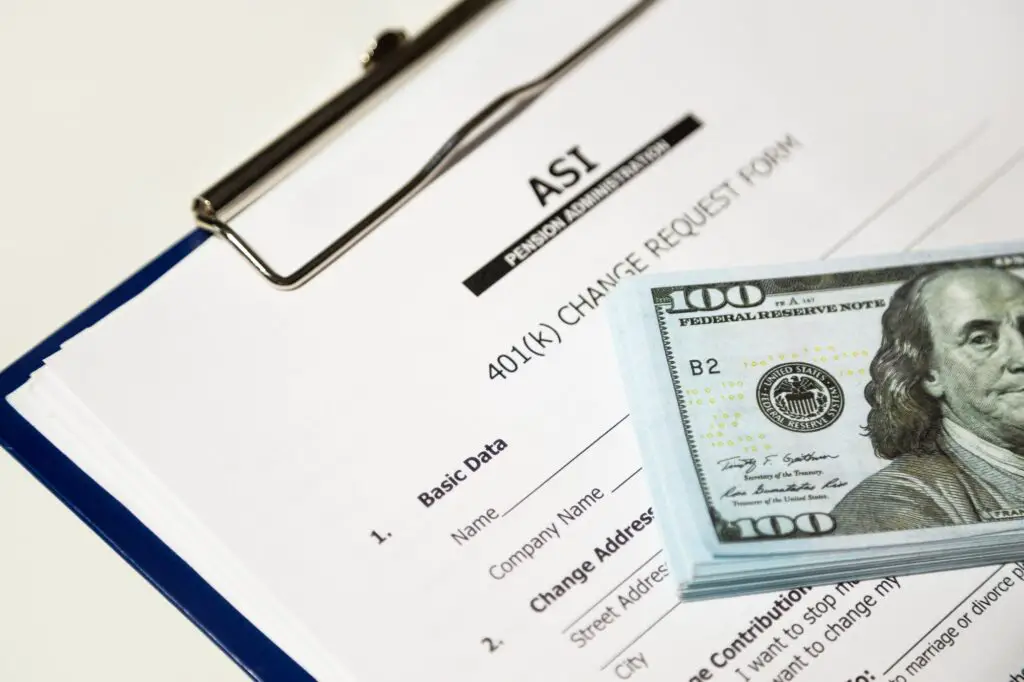401k matching is a simple yet powerful way for employers to help employees save for retirement. Employers who offer a 401k match may provide their employees with an additional contribution, or “match” for each dollar contributed by the employee. This additional contribution can be used to help employees reach their retirement goals faster, and add to the overall retirement benefits package.
In this guide, we’ll provide a comprehensive look at how 401k matching works, the benefits of employer matching, and how to maximize your contributions. We hope this guide will give you a better understanding of 401k matching, and how it can help you prepare for a comfortable retirement.
What is a 401k Match?
A 401k match is simply an employer-sponsored retirement savings plan. It works by allowing the employer to match a portion of the employee’s own contributions to the plan. The employer will usually match a certain percentage of the employee’s contribution (often around 50%), up to a certain limit.
For example, if an employer offers a 50% match up to 6% of salary, then if an employee contributes 6% to their 401k plan, the employer will match 50% of this contribution (3% of salary). This additional contribution from the employer helps to bolster the employee’s retirement savings.
The amount of the contribution, and the percentage of salary matched, is determined by the employer. Employers are not required to match any but contributions, but by doing so they can encourage their employees to save for retirement.
Benefits of 401k Matching for Employers and Employees
The primary benefit of 401k matching for employers is that it helps attract and retain talent. Employers are typically competing with other organizations for top talent, and a 401k match can be an effective way to differentiate themselves. Employees often view a 401k match as a tangible benefit, providing further incentive to join, and stay with, a company The employer also benefits from having a more secure and financially prepared workforce.
For employees, the primary benefit of 401k matching is that it provides an additional contribution, which can really add up over time. The employer contribution can help boost retirement savings, and allows the employee to reach their retirement goals faster. In addition, the employer contribution does not incur any taxes, allowing for even more savings.
Finally, for individuals who don’t have access to other retirement savings options, such as an IRA, the 401k match offers a simple and effective way to save for retirement.
Understanding the Different Types of 401k Match
There are several different types of 401k match:
* The Traditional Match: This type of match matching is the most common. With a traditional match, the employer will match a certain percentage (usually 50-65%) of the employee’s contribution, up to a designated limit.
* The Safe Harbor Match: A safe harbor match (also known as a no-reduce match) is similar to a traditional match in that there is a set percentage of the employee’s contribution that will be matched. However, the employer is required to make the matched contribution even if it sees a dip in profits.
* The Matching Conversion: With this type of match, the employer sets a maximum amount that can be matched, and then gives a matching percentage based on how much is contributed. For example, if an employee contributes 2% of their salary, the employer might give a 50% match on the first 1% and then a 25% match on the second 1%.
* The Discretionary Match: This type of match is less common and involves the employer setting a general percentage of contributions that will be matched, but allowing for a certain degree of flexibility in how the match will actually be distributed.
Maximizing Your Contributions
Once you understand how 401k matching works, the next step is to maximize your contributions. Start by contributing the maximum amount allowed by your employer (which is usually up to 15% of your salary). Depending on your employer’s matching structure, this may be enough to receive the full match. If not, adjust your contributions to reach the maximum match available.
It’s also important to ensure that you are getting the most out of your 401k match. For example, if your employer offers a 50% match up to 6% of your salary, then it makes more sense to contribute 6% of your salary (rather than 5%) so that you can get the full match. Increasing your contributions can help to increase your retirement savings in the long run.
Finally, it’s important to take advantage of catch-up contributions. Once you reach age 50 or older, you can contribute up to $6,500 in catch-up contributions per year in addition to the standard contribution of up to $18,000. This can help to maximize your 401k savings for retirement.
Final Thoughts
401k matching is a great way for employers to help employees save for retirement. Employers can contribute to their employees’ retirement savings by offering a matching contribution, which helps to incentivize saving and bolsters overall retirement benefits.
Understanding how 401k matching works is important to making the most of this benefit. We hope this guide has given you a comprehensive overview of this key retirement savings option.
Good luck and happy saving!

